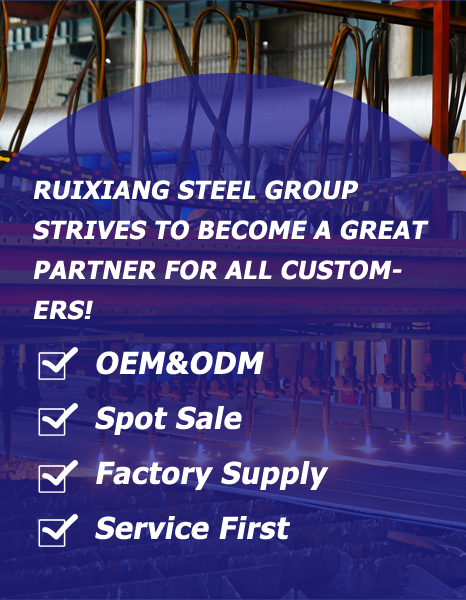Tips for Preventing Pitting Corrosion on Stainless Steel in Chloride Environments
Stainless steel is renowned for its corrosion resistance, but in chloride-rich environments—such as coastal areas, chemical processing plants, or settings where chlorides are present—it can become vulnerable to pitting corrosion, a localized form of attack that can lead to equipment failure. Ruixiang Steel specializes in providing solutions and expertise to help you mitigate this risk. Here are essential tips to prevent pitting corrosion on stainless steel in chloride-containing settings.
Select the Right Stainless Steel Grade
The inherent resistance of stainless steel to pitting corrosion is largely determined by its chemical composition. Grades with higher levels of chromium (Cr), molybdenum (Mo), and nitrogen (N) offer superior protection. The Pitting Resistance Equivalent (PRE) number is a useful guide: PRE = %Cr + 3.3 × %Mo + 16 × %N. A higher PRE value indicates better pitting corrosion resistance. Ruixiang Steel recommends and supplies high-performance grades like duplex stainless steels (e.g., S32750) which are specifically engineered for harsh environments.
Ensure Proper Surface Treatment and Maintenance
Passivation: This chemical treatment strengthens the protective oxide layer on the stainless steel surface, making it more resistant to chlorides.
Keep Surfaces Clean and Smooth: Regular cleaning to remove chloride-containing deposits, dirt, and contaminants is crucial. A smooth, polished finish minimizes areas where corrosive agents can accumulate.
Post-Processing Care: After mechanical processes like shot peening (used to impart compressive stress), it is advisable to perform passivation to restore corrosion resistance.
Control the Operating Environment
Manage Chloride and Oxygen Levels: Where possible, reduce the concentration of chloride ions and dissolved oxygen in the environment.
Use Inhibitors: Adding corrosion inhibitors, such as nitrates, to the environment can significantly slow down the corrosion process.
Introduce Sulfate Ions: Research indicates that sulfate ions (SO₄²⁻) can competitively inhibit chloride ions from attacking the passive film, raising the chloride threshold that triggers pitting.
Optimize Design and Welding
Design structures to avoid crevices and stagnant areas where chlorides can concentrate. During welding, ensure proper procedures are followed to maintain the steel's microstructure and prevent the formation of zones with reduced corrosion resistance.
By partnering with Ruixiang Steel, you gain access to high-quality stainless steel products and the technical guidance to ensure their longevity. Implementing these strategies will significantly enhance the performance of your stainless steel components in challenging chloride environments.
 Click:156Edit: Admin
Click:156Edit: Admin Time:2025-10-04 00:19:31
Time:2025-10-04 00:19:31

